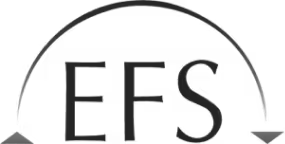background
As the sole civilian blood transfusion operator in our country, the main mission of the EFS is the national self-sufficiency in blood products. It is also involved in numerous activities, such as medical biology analyses, cell and tissue therapy or research.
Challenges/Issues
- Waste of time when entering planning information.
- Limited ability to analyze and synthesize.
- Difficulty sharing the right information at the right time.
- Duplication of information.
- Impossibility of collaborative work.
- The impact of a change in collection was not taken into account.
Collection planning takes multiple factors into account. Thus, we often organize donations on market days and, if we have to delay a few days because the room is not available, the number of donations can be divided by two.
Being already in contact with the publisher of the Simplicité low-code platform, I proposed to the CIO of the Brittany Region to develop a POC with an agile low-code approach.
We did the Go-Live of the application. It is now operational and fully meets the needs of its users. The application is still in the testing phase, because you should know that planning is done one year in advance. Users are exploiting the tool, but we will still have to wait a few months to get enough perspective.
The key advantage of low-code was that users were able to see the results fairly quickly and have the data model and points that might have been misunderstood corrected very quickly.
Claire Huault
Director of Innovation, Europe, Projects and Strategic Studies
needs
- Inventory forecasts for Blood products depend on successful collections all year round.
- Scheduling collections is a strategic activity. It is now based on the use of several Excel tables and is very time-consuming.
- La scheduling Is an activity intricate and subject to a large number of stresses technical and operational. It is based on notions accurate calendars (by hour/day), geographical concepts (collection locations), and HR concepts of staff assignment.
- La managerial And the scheduling Collections is a regional activity that is consolidated at the national level.
EFS & Simplicité for planning collections in the Brittany region
Choosing a low-code platform?
Challenges
Objectives
Project:
Project entrusted directly to the publisher for a pilot that is quickly operational and replicable throughout France.
Setting up a dedicated agile project team (EFS):
— CIO of the Brittany region in pilot
— Business managers
— K-users
Hyper-agile implementation to replicate, extend and improve functional coverage. Projection to the target//
Capacity to generalize with less effort at the national level.
Promise of short deadlines.
Solutions
One flexible platform and adapted to the needs of the profession, in quick response to new business requirements.
The successes
- Involved and satisfied users
- Estimated costs 4 times lower than a “classical” approach (specific development). Design-to-cost approach, within a tight budget.
- Rapid adoption by users (reduction of exchange management costs)
- All goals have been met or exceeded:
- eradication of input errors and duplicates
- reduction of burdens and processing times
- creation of a repository of usable data for processing and planning
- Agility requires a high availability of experts
Points of vigilance
- Consideration too late on the implementation of the RUN → must be evaluated at the start
- Building the right team, in particular the AMOA SI, to “frame” the job
- Do not neglect the increase in autonomy if necessary and involve several carriers in the event of failure of one of them (resignation of the bearer)
- Enlargement at the national level requires a driving force
Prototype created in a few days based on the transmission of the existing spreadsheet
SIMPL V0 completed in 3 months
Weekly iterative recipes and iterations on the functional scope







